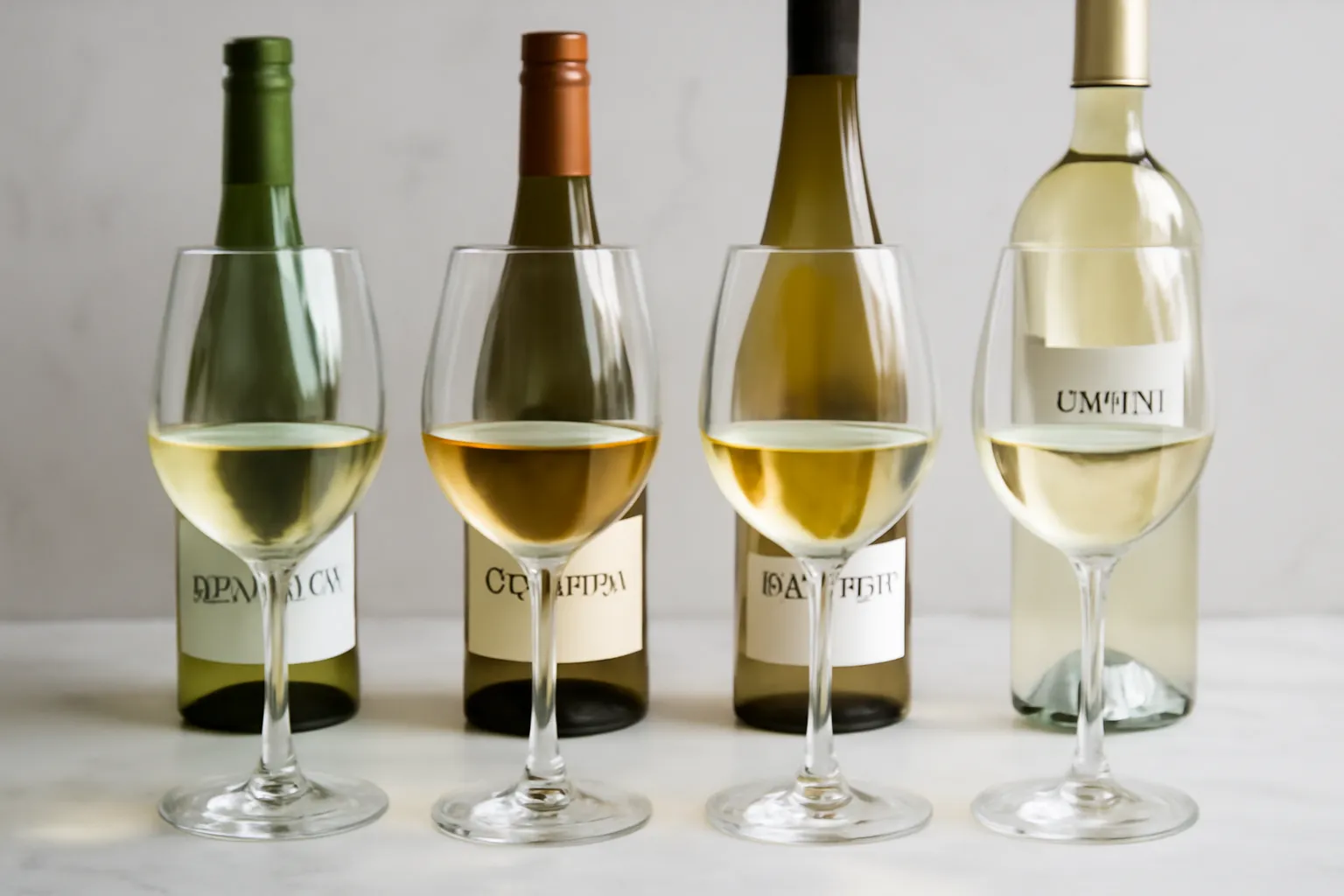Have you ever wondered why white wines can taste so dramatically different from one another? Or why Chardonnay feels rich and buttery while Sauvignon Blanc dances with zesty citrus? In this article, we explore the fascinating world of white wine varieties, uncovering the distinct characteristics of the grapes behind them and comparing the most popular types for any wine lover or curious beginner. Stick around — the glass of knowledge is about to be full.
Comparison of white wine varieties
White wine isn’t a one-size-fits-all experience. From crisp and zesty to creamy and oaky, the spectrum of white wines offers a compelling range of flavors, textures, and aromas. Understanding how these varieties compare helps both novices and connoisseurs make better selections.
Major Types Compared
Let’s look at four of the most iconic white wine types and how they differ in taste, body, origin, and food pairings:
| Variety | Body | Flavor Notes | Origin | Best Pairings |
|---|---|---|---|---|
| Sauvignon Blanc | Light | Citrus, green apple, grass | France (Loire), NZ | Goat cheese, seafood |
| Chardonnay | Medium-Full | Apple, vanilla, butter | France, USA | Roast chicken, creamy pasta |
| Riesling | Light | Peach, honey, petrol (aged) | Germany, Alsace | Spicy food, pork |
| Pinot Grigio | Light-Medium | Lemon, pear, almond | Italy, France | Light salads, grilled vegetables |
These wines vary widely due to several factors, such as terroir (soil and climate), winemaking technique, and grape variety.
My Tasting Experience
When I hosted a white wine tasting workshop in Napa Valley, the stark contrast between a barrel-aged California Chardonnay and a Marlborough Sauvignon Blanc blew our guests away. While the Chardonnay enveloped the palate with buttery richness, the Sauvignon Blanc offered a bright, zippy refreshment that reset the senses.
Another great comparison was between a dry German Riesling and a typical Italian Pinot Grigio. Where the Riesling had notes of ripe stone fruit with a whisper of sweetness and minerality, the Pinot Grigio was straightforward, fresh, and slightly floral — perfect for summer afternoons.
How to Choose What’s Best for You
Here are a few tips to find your favorite
-
Prefer acidity? Go with Sauvignon Blanc or Pinot Grigio.
-
Like sweetness? Riesling (especially Kabinett or Spätlese) is your friend.
-
Love creamy textures? Go for oaked Chardonnay.
-
Seeking food pairings? Match acidity with salt and sweetness with spice.
👉”Compare more white wines here”👈
White wine grape varieties
White wines derive their complexity from the grapes they’re made from — and white wine grapes are a fascinating study in diversity.
Key White Grape Varieties
Here’s a breakdown of essential white grape types and what makes each one special:
-
Chardonnay – Grown everywhere, its neutral profile allows winemakers to shape its flavor through oak aging or malolactic fermentation.
-
Sauvignon Blanc – Naturally aromatic, with bright acidity and often fermented in stainless steel to preserve freshness.
-
Riesling – Versatile and aromatic, ranges from bone-dry to lusciously sweet.
-
Pinot Gris/Grigio – The same grape with different expressions: richer and spicier in Alsace, crisp and lean in Italy.
-
Viognier – Full-bodied with floral and apricot notes, perfect for those who enjoy aromatic whites.
-
Albariño – From Spain, high in acidity and perfect with seafood.
-
Gewürztraminer – Intensely perfumed with lychee and spice, often sweet.
A Real-World Perspective
When I visited vineyards in Alsace, I was surprised to learn that the same grape — Pinot Gris — produced dramatically different wines depending on winemaking choices. One producer fermented it dry with a waxy mouthfeel and ginger finish, while another kept it off-dry, enhancing its roundness and honeyed notes.
Similarly, in Oregon’s Willamette Valley, a winemaker explained how cooler climates favor acidity, especially for grapes like Chardonnay and Riesling. Their Chardonnay, un-oaked and bright, stood in stark contrast to their California counterparts.
Growing Trends in White Grapes
With climate change impacting traditional regions, some winemakers are now growing white varieties in cooler areas like southern England or higher altitudes in South America. Hybrid grapes and natural wine styles using native yeasts are also gaining popularity among experimental producers.
👉”Discover grape varieties in depth”👈
White wine varieties
Beyond grapes and regions, white wines can also be classified by style, sweetness, and winemaking techniques.
Styles of White Wine
Here are six primary white wine styles and what defines them:
-
Crisp and Light – Sauvignon Blanc, Pinot Grigio
-
Rich and Creamy – Oaked Chardonnay, Viognier
-
Sweet and Aromatic – Riesling (Spätlese), Gewürztraminer
-
Dry and Mineral – Albariño, Muscadet
-
Sparkling Whites – Prosecco, Champagne (Blanc de Blancs)
-
Orange/Amber Wines – Made from white grapes with skin contact, often used in natural winemaking
Behind the Bottle: Techniques That Matter
The fermentation vessel—steel vs oak—dramatically alters a wine’s style. Oak imparts creaminess and flavor compounds like vanilla and clove. Steel preserves freshness and acidity.
Additionally, aging on lees (dead yeast cells) adds a bready richness, especially common in Chardonnay and Champagne. Skin contact, usually avoided in white wine, is now making a comeback in natural wines to enhance texture and complexity.
Personal Favorites and Pairing Tips
A standout for me was a skin-contact Pinot Grigio from Slovenia. Though made from a “white” grape, the amber color and tannic grip made it resemble a red wine in structure, pairing beautifully with grilled meats.
For elegant dinners, white Burgundy (Chardonnay) is always a winner — sophisticated, nuanced, and food-friendly. And for easy sips at a beach picnic? Vinho Verde from Portugal, lightly sparkling and super refreshing.
👉”Explore more white wine styles”👈
Conclusion
In the end, the world of white wine is as varied and fascinating as its red counterpart. From bright and citrusy Sauvignon Blanc to silky, oak-aged Chardonnay, each variety offers something unique. Understanding the grape origins, winemaking methods, and stylistic differences gives you the tools to enjoy every sip more deeply.
As Ernest Hemingway once said, “Wine is the most civilized thing in the world.” Embrace its diversity, and let your palate travel across regions and styles. Whether you’re pouring for a dinner party or sipping solo, white wine offers an experience worth savoring — glass after glass.






